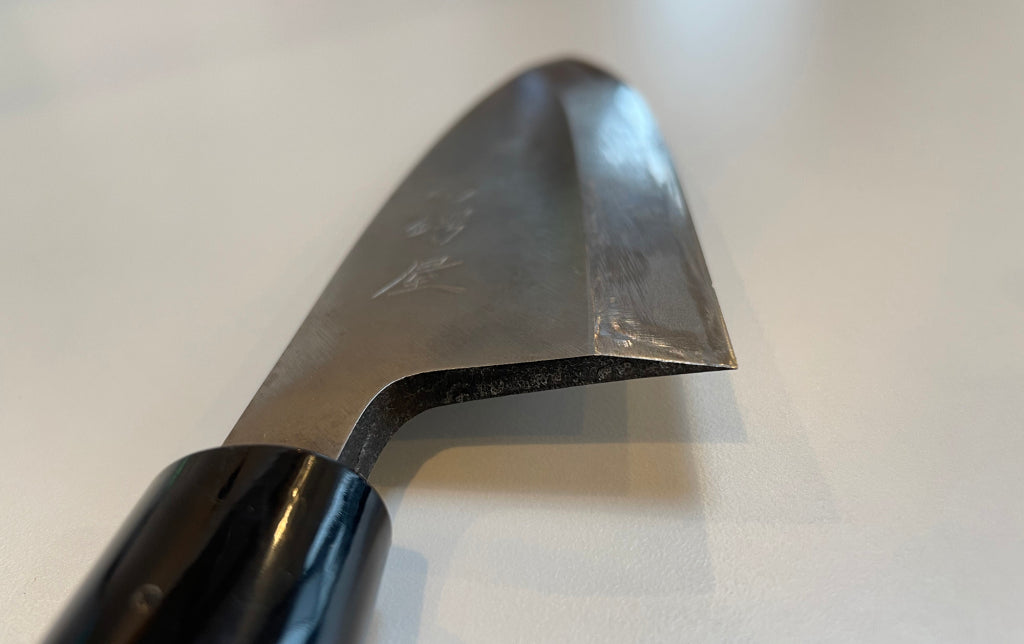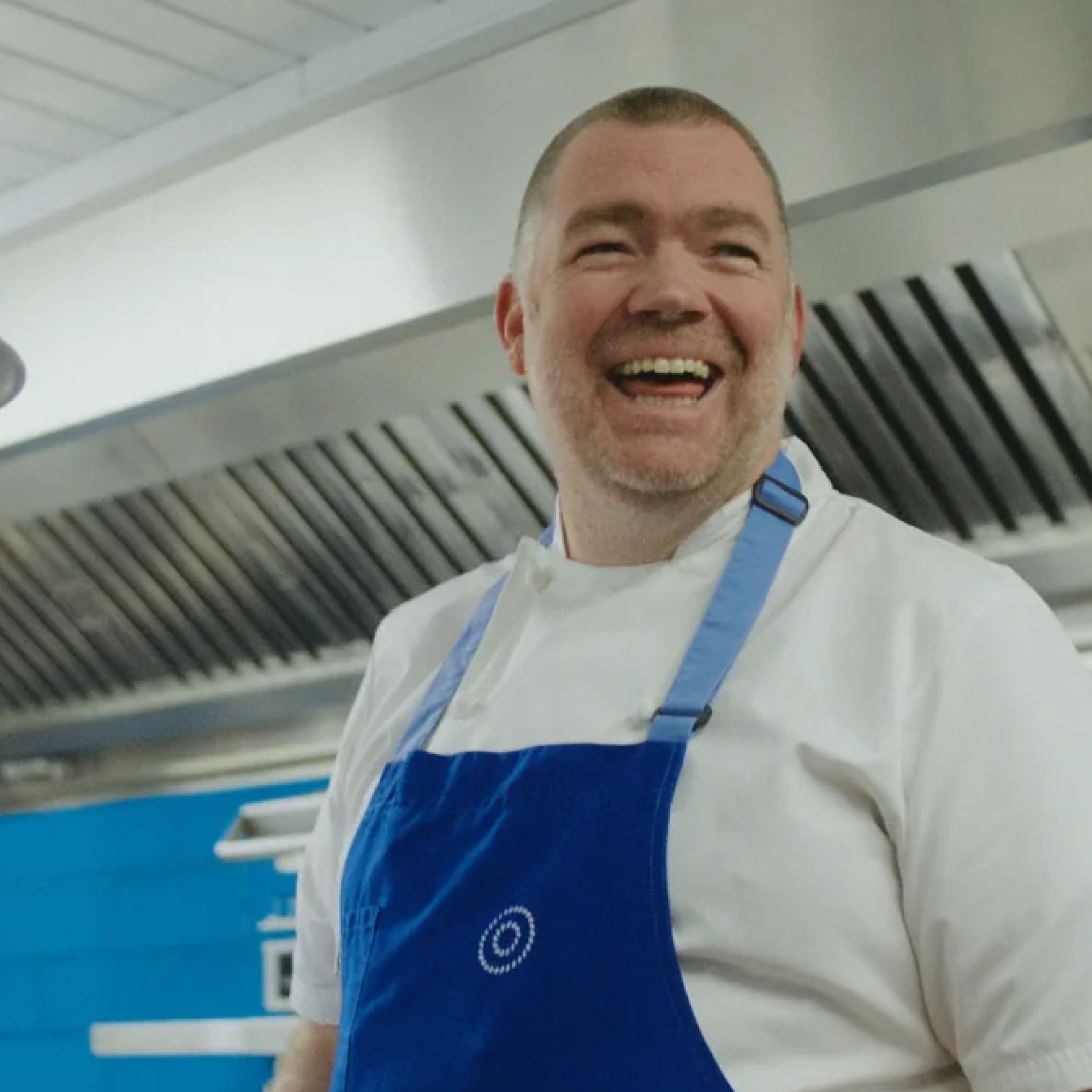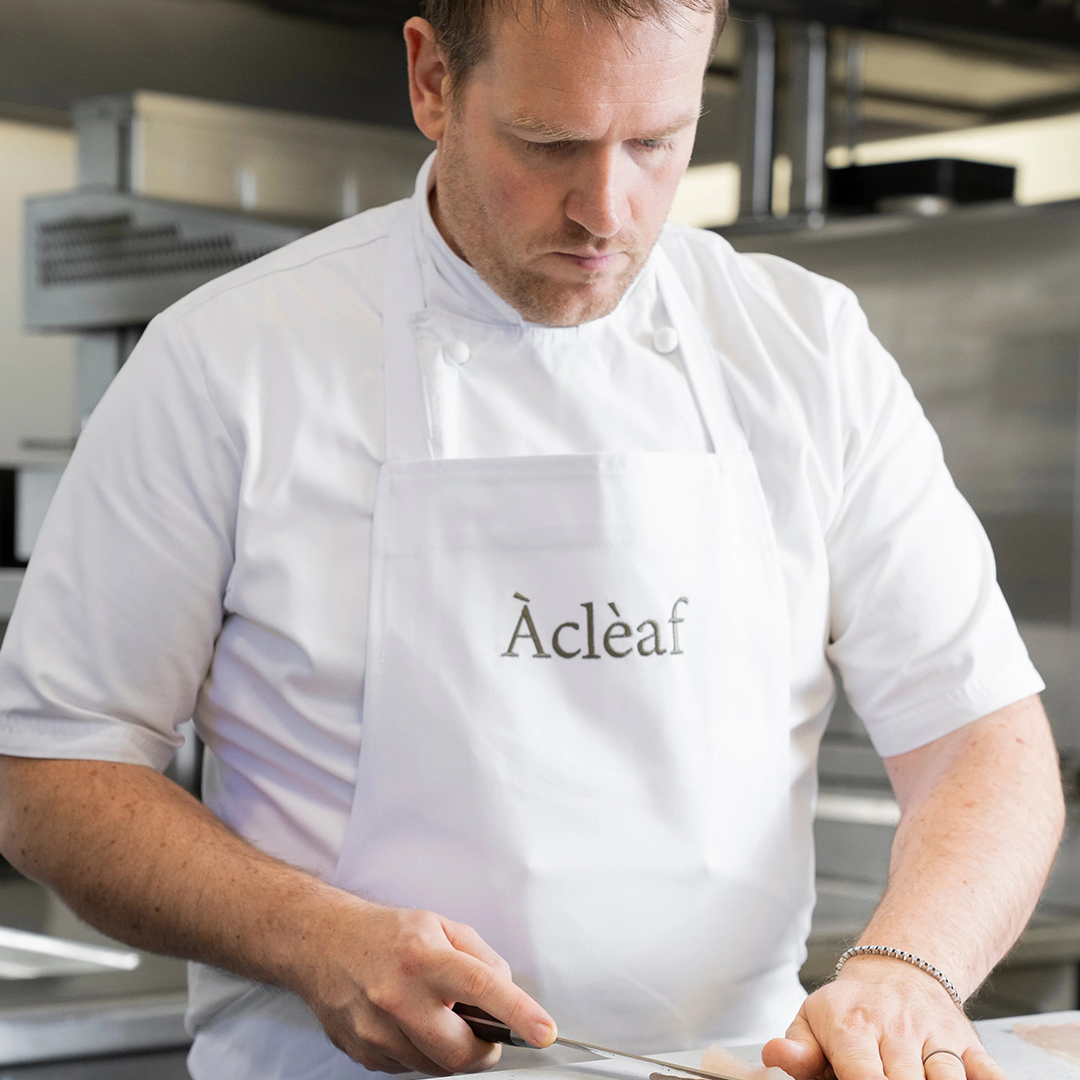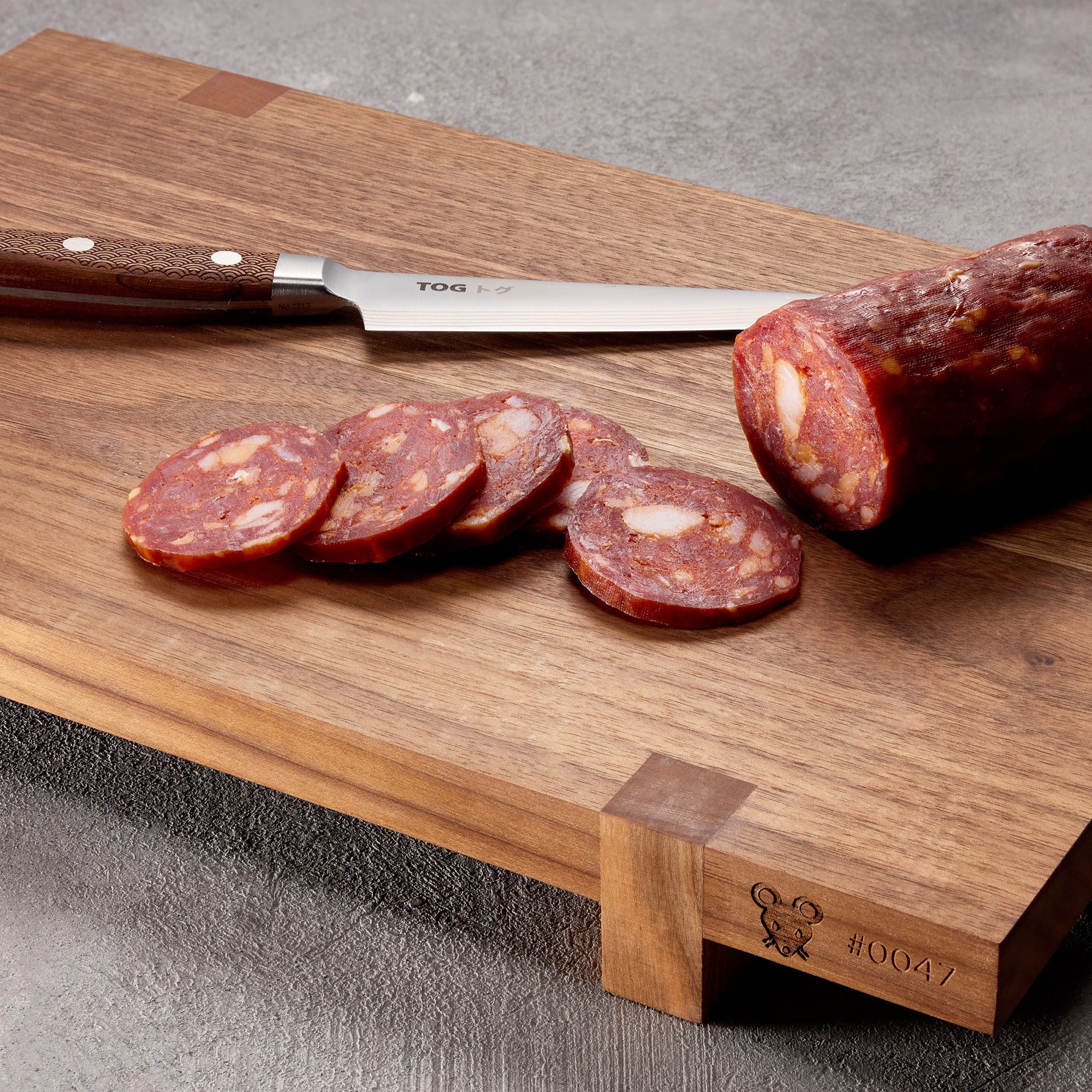Here's the short answer:
Sharpen Japanese knives at 15º each side, Western knives at 20º each side and meat cleavers at 25º each side.
But there's a bit more to it than that...
The angle you hold the knife at to the whetstone is called the ‘edge angle’.
A shallower edge angle means a sharper knife but a more delicate edge that is a little more prone to chipping and blunting.
Japanese knives: 15º
Western knives: 20º
Meat cleavers: 25º
JAPANESE KITCHEN KNIVES
Japanese knives are typically ground at shallower angles which makes them extremely sharp. To prevent a reduction in durability, they use harder steels to get sharpness and durability at the same time. Clever.
WESTERN KITCHEN KNIVES
Western knives are sharpened at slightly steeper angles to reduce chipping.
MEAT CLEAVERS
Meat cleavers are generally ground at around 25 degrees as they take a lot of abuse. The steep angle not only reduces chipping but helps cleave (split apart) the food.

BEVELS
When a knife is turned from a piece of sheet metal into a knife, the grinding creates a taper to an edge which is called the ‘primary bevel’.
When you sharpen a knife, you are grinding what is called a ‘secondary bevel’ onto it. This is much much smaller. If you look closely, you can see it.
If the knife is sharpened the same on both sides, it is called ‘double bevel’. The “inclusive angle” (total angle) in this case is double the ‘edge angle’.
Still with me?
Perhaps a diagram might help...


SINGLE BEVEL KNIVES
Traditional Japanese knives are ground ‘single bevel’ which means one side of the knife is flat. The edge angle on the flat side is zero. In fact, this side is often 'hollow ground' so that you don’t have to sharpen the whole blade surface, just the spine and cutting edge.
Single bevel knives are handed so they suit either left or right handed people. They are very sharp because the included angle is actually half what it would be on a double bevel knife – about 15 degrees. These traditional Japanese knives (Yanagiba, Deba and Usuba) are particularly suited to Japanese food, eg. sashimi and daikon radish.
Single bevel allows for straight cuts where the piece of very soft food can fall away easily. Try and cut a more rigid cucumber and a single bevel knife is likely to carve under in an arc rather than giving a straight cut.

DOUBLE BEVEL KNIVES
Double bevel knives are more versatile and more durable. In the West, almost all knives are double bevel. Generally, the knife is ground exactly the same way on both sides, but not always. When it is, this is called a 50/50 edge.
70/30 EDGES
There is also a thing called a 70/30 edge, originating in Japan. This is where the side of the blade relating to the dominant hand of the owner is ground a little more and at a slightly lower angle. If you’re right handed, this would create a larger bevel on the right hand side of the knife. This can actually happen naturally when people are sharpening knives.

Compared to a 50/50 edge sharpened at 15 degrees on both sides, a 70/30 edge will have a slightly larger angle on the dominant (“70”) side with the larger secondary bevel – e.g. 20 degrees. So what’s the point of this (excuse the pun)? Well, it’s about ergonomics. Because of the way you stand at a counter when you cut, a 70/30 edge makes cutting a little easier than a 50/50 edge. It makes it easier to make straight cuts. TOG Knives come with a 70/30 edge.
If you want to recreate the 70/30 factory edge of a TOG knife, sharpen 20 degrees on the dominant side and 10 degrees on the other side. Sharpen MORE on the dominant side, too, so the secondary bevel on that side appears about twice the size of the one on the other side.
I should say, though, that I don’t think anyone other than professional sharpeners needs to worry about 70/30 edges – I recommend everybody simply put 15 degrees on each side of a TOG knife (which is what I do!). If you wish to sharpen a little more on your dominant side, that should improve performance.
FINAL FINISHING
Finally, remember that if you're using a polishing whetstone (6000 grit or above) or a leather strop then you can lift the angle by a couple of degrees. This will ensure you're sharpening the very apex of the knife. Sometimes during hand sharpening the secondary bevel you create might become slightly rounded off as the angle naturally varies a little during sharpening.

CONCLUSION
Now you know what angle you want to sharpen at, you need to set the angle correctly using an angle guide. Then... you need to make sure you keep that angle consistent throughout the sharpening process. This will come with practice and time. While you're learning, you can always check you're still on track by referring back to the angle guide.
Read about How to Sharpen a Knife with a Whetstone here.
Good luck!
TOG SHARPENING GUIDE

Browse our articles on knife sharpening to learn from scratch or hone your skills.
TOG SHARPENING PRODUCTS
We have created what we believe is the best range of sharpening products possible.




